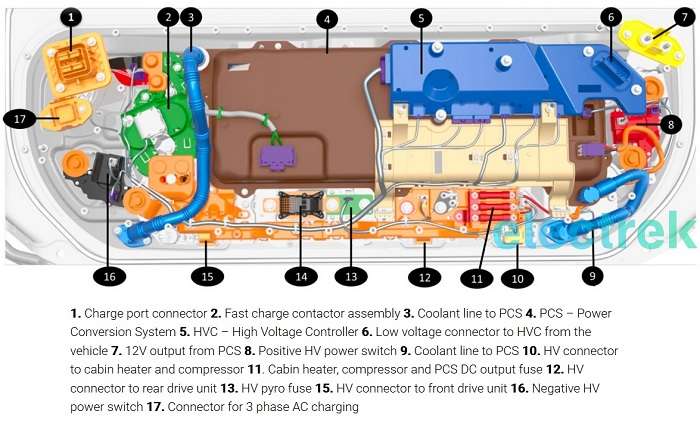The first thing I would note is that in this vehicle, Tesla has integrated MOST of the vehicle electronics INTO the battery assembly which is put together in the Gigafactory in Nevada. The charger, BMS controller, junction box, DC-DC converter and all protection circuitry has been moved into a hump on the end of the battery termed for no apparently good reason the “penthouse”. This can actually be accessed for service by removing the back seat as it projects upwards exactly where the seat cushion is for the back seat. You would have to remove the seat bottom, a couple of braces, and then a bunch of star head screws, but it pops off and allows access to the fuses and contactors and so forth pretty readily.
The combined charger/dc-dc converter is a thorough MARVEL inside. We will be looking more closely at this in the future but it again has NO apparent relationship to any previous Tesla charge circuitry, and they squeeze 10kW of charger into a remarkably small and cool running package.



